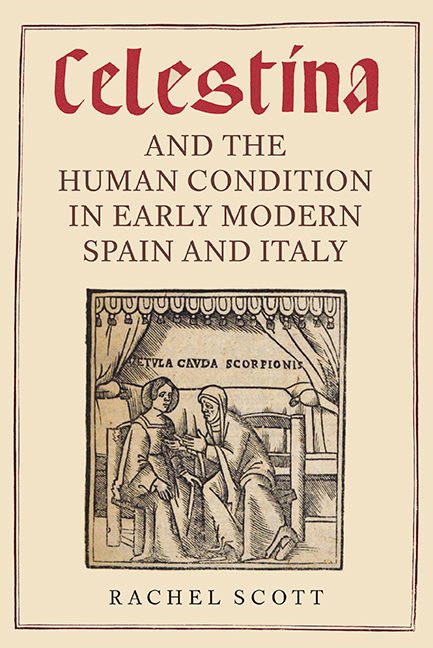Book contents
- Frontmatter
- Dedication
- Contents
- List of Illustrations
- Acknowledgements
- Note on Editions, Transcriptions, and Translations
- Introduction
- 1 Debating the Human Condition: Celestina's Interlocutors
- 2 Self-knowledge and Solitude: Diálogo de la dignidad del hombre
- 3 Fashioning Self and Society: Il Cortegiano
- 4 The Myth of Freedom: La vita delle puttane
- 5 Corrupting Women, Corrupting Words: Coloquio de las damas
- Afterword
- Bibliography
- Index
4 - The Myth of Freedom: La vita delle puttane
Published online by Cambridge University Press: 16 May 2018
- Frontmatter
- Dedication
- Contents
- List of Illustrations
- Acknowledgements
- Note on Editions, Transcriptions, and Translations
- Introduction
- 1 Debating the Human Condition: Celestina's Interlocutors
- 2 Self-knowledge and Solitude: Diálogo de la dignidad del hombre
- 3 Fashioning Self and Society: Il Cortegiano
- 4 The Myth of Freedom: La vita delle puttane
- 5 Corrupting Women, Corrupting Words: Coloquio de las damas
- Afterword
- Bibliography
- Index
Summary
The Paradox of the Prostitute
This study has so far considered aspects of the human condition through members of the dominant social group – Calisto, Melibea, and Pleberio, who are educated, noble, wealthy individuals. But the question of man's misery and dignity did not only concern the elites in society, as Noël Salomon has shown in his study of ‘el villano digno’ in sixteenth- and seventeenth-century dramatic works, which include heterogeneous and individualised depictions of those on the margins (1985: 623–761, 674–705). This is clearly also exemplified by Celestina, whose representation of life from multiple viewpoints, including nobles and merchants, servants, go-betweens, sorceresses and prostitutes, recognises various experiences of the human condition. Indeed, the peripheries of society were of considerable interest to early modern societies. Artwork from this period reveals a fascination with the old, infirm, and physically imperfect in addition to the courtly and elegant. Leonardo da Vinci's drawings, Study of Five Grotesque Heads (1494) or Caricature of the Head of an Old Man (c. 1507) acknowledge the breadth of the human condition as well as providing a humorous caricature, as do Lucas Cranach's Courtesan and the Old Man and The Old Fool (both ca. 1530) and Quintin Massys's Grotesque Old Woman (1513).
In the sixteenth century, marginal groups are also brought centre stage as protagonists in literature. Though not demonstrative of its entire print tradition, an example of this can be seen in the title pages of some editions of the Tragicomedia, which feature the eponymous old bawd in a more prominent position (figure 5). With the emergence of the picaresque, we find more attention being paid to non-noble characters – something that Giancarlo Maiorino, in his introduction to The Picaresque: Tradition and Displacement, attributes to the cultures of the Reformation and Counter-Reformation, which ‘could not but take notice of the need to reach out toward the lower levels of society’ (1996: xiii). Maiorino adds that the picaresque ‘popularized artforms more responsive to the pulse of life and the broader spectrum of a human nature’ (1996: xiii). Servants, prostitutes, gypsies, and peasants all feature as primary protagonists in Pietro Aretino's Ragionamenti (1534), Francisco Delicado's La Lozana andaluza (1534), Lazarillo de Tormes (1554) and El Crotalón by Cristóbal de Villalón (c. 1556), as well as Celestina's continuations.
- Type
- Chapter
- Information
- Publisher: Boydell & BrewerPrint publication year: 2017



